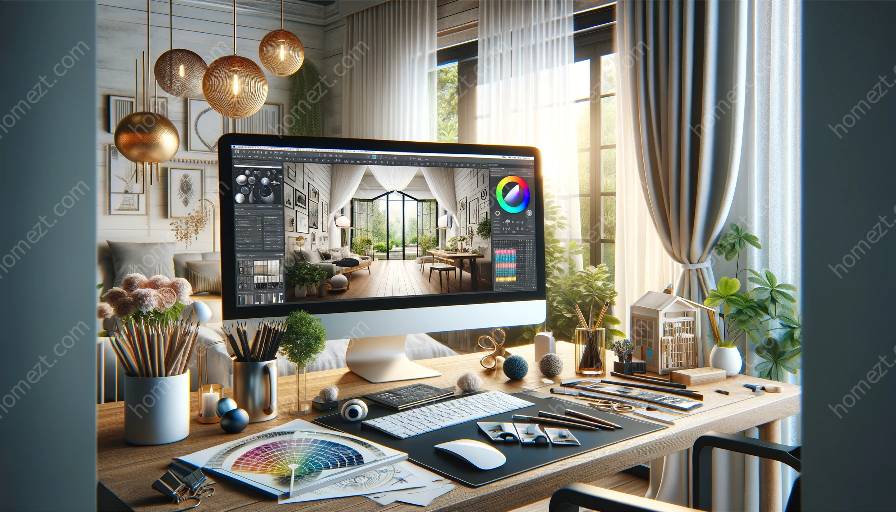Interior design has undergone a remarkable transformation with the advent of innovative design software and tools. These technologies have revolutionized the way interior designers conceptualize, plan, and execute their projects, leading to enhanced creativity, efficiency, and precision.
Evolution of Design Software in Interior Design
The evolution of design software has had a profound impact on the interior design industry. Previously, interior designers relied heavily on hand-drawn sketches, physical mood boards, and manual processes to convey their design concepts and ideas to clients. However, the emergence of advanced design software has completely changed this landscape.
With the introduction of computer-aided design (CAD) software specifically tailored for interior design, designers now have access to powerful tools that allow them to create, modify, and visualize their designs in a virtual environment. This has significantly streamlined the design process, enabling designers to explore a wider range of ideas, experiment with different layouts, and present more accurate and detailed representations of their designs to clients.
Impact of 3D Modeling and Rendering Tools
One of the most significant innovations in design software for interior design is the advancement of 3D modeling and rendering tools. These technologies have revolutionized the way interior designers communicate their vision to clients and stakeholders. By leveraging 3D modeling software, designers can create immersive, photorealistic visualizations of their designs, providing clients with a more comprehensive understanding of the proposed spaces.
Additionally, the integration of rendering tools has enabled designers to apply realistic textures, lighting effects, and material finishes to their 3D models, resulting in stunning visuals that accurately portray the final look and feel of the designed spaces. This level of visual fidelity has greatly enhanced the ability of designers to convey their concepts and has increased client satisfaction and approval rates.
Enhanced Collaboration with Virtual Reality (VR) and Augmented Reality (AR)
Virtual Reality (VR) and Augmented Reality (AR) have emerged as game-changing technologies in the interior design sector, offering designers and clients the ability to experience and interact with designs in a completely immersive manner. By utilizing VR and AR applications, interior designers can create virtual walkthroughs and interactive experiences, allowing clients to explore the designed spaces in a realistic, virtual environment.
This level of engagement not only enhances client understanding and appreciation of the design concepts but also fosters better collaboration and communication between the design team and stakeholders. Clients can provide feedback and make informed decisions based on their virtual experiences, leading to more effective and satisfying design outcomes.
Integration of Artificial Intelligence (AI) in Design Processes
Artificial Intelligence (AI) has significantly impacted the interior design field by enabling designers to streamline tedious and time-consuming tasks, thus allowing them to focus more on creativity and strategic decision-making. AI-powered design software can analyze vast amounts of data, trends, and preferences to provide designers with valuable insights and recommendations for their projects.
Furthermore, AI algorithms can assist designers in space planning, furniture placement, and material selection by generating optimized solutions based on parameters such as spatial constraints, functional requirements, and aesthetic preferences. This level of intelligent automation has expedited the design process and empowered designers to deliver personalized and efficient solutions to their clients.
Future Trends and Innovations in Design Software for Interior Design
The rapid pace of technological advancement continues to drive innovation in design software, promising even more transformative changes in the interior design domain. From the integration of machine learning algorithms for predictive design analysis to the development of collaborative, cloud-based platforms for real-time project management, the future of design software holds immense potential for further revolutionizing the interior design field.
As interior design software continues to evolve, it will undoubtedly reshape the way designers conceptualize, communicate, and execute their visions, ultimately delivering more tailored, immersive, and personalized experiences for clients.


























